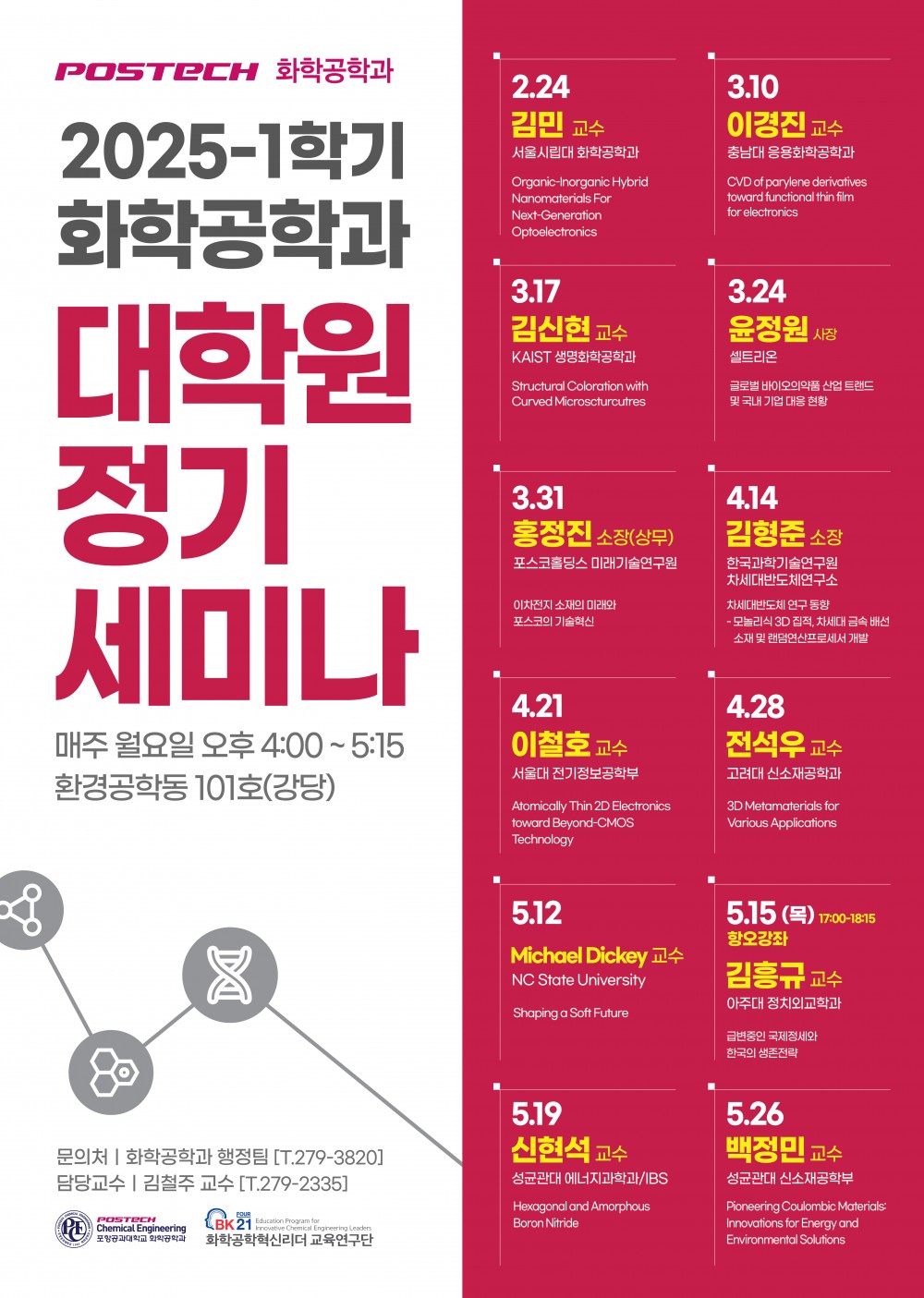
알림마당
정기세미나
미래를 창조하는 포스텍 화학공학과
Hexagonal and Amorphous Boron Nitride
- 일자
- 2025.05.19(월)
- 시간
- 16:00 ~ 17:15
- 연사
- 신현석 교수
- 장소
- 환경공학동 101호 강당
- 소속
- 성균관대학교 에너지과학과/IBS
▷ 제목: Hexagonal and Amorphous Boron Nitride
▷ 내용: Hexagonal boron nitride (hBN) is a promising two-dimensional (2D) material owing to its unique optical properties in the deep-UV region, mechanical robustness, thermal stability, and chemical inertness. hBN thin films have gained significant attention for various applications, including nanoelectronics, photonics, single photon emission, anti-corrosion, and membranes. Thus, wafer-scale growth of hBN films is crucial to enable their industrial-scale applications. In this regard, chemical vapor deposition (CVD) is a promising method for scalable high-quality films. To date, considerable efforts have been made to develop continuous hBN thin films with high crystallinity, from those with large grains to single-crystal ones, and to realize thickness control of hBN films by CVD. However, the growth of wafer-scale high crystalline hBN films with precise thickness control has not been reported yet. The hBN growth is significantly affected by substrate, in particular the type of metals, because the intrinsic solubilities of boron and nitrogen depend on the type of metal. In this talk, state-of-the-art strategies adopted for growing wafer-scale, highly crystalline hBN are summarized, followed by the proposed mechanisms of hBN growth on catalytic substrates. Furthermore, hBN on Cu foil can be used as a substrate for horizontal, uniform Li electrodeposition, where hBN plays a role in reducing the energy barrier for the surface diffusion of Li, thereby suppressing the formation of Li dendrites. The uniform Li film on hBN/Cu is very promising for Li metal anodes for next-generation batteries. In addition, amorphous BN (aBN) as a counterpart of crystalline hBN is introduced. Detailed structural characterisation indicates that a-BN is sp2-hybridised, with no measurable crystallinity, and mechanically robust, with excellent diffusion-barrier characteristics. The aBN thin film shows ultra-low dielectric constant (< 2.5), indicating great potential for its applications in Cu interconnects of integrated circuits.




